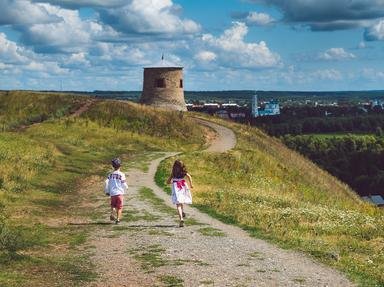Quiz Answer Key and Fun Facts
1. How do we know if an artifact belonged to King Tutankhamun? Many of the items that belonged to him are marked with his name. What is this symbol called?
2. The symbol of good luck and long life in ancient Egypt is seen on many artifacts found in King Tutankhamun's tomb. What is the name of this symbol?
3. Some historians believe King Tutankhamun might have been riding in a vehicle similar to this one when he suffered a terrible accident that led to his death. In what might he have been riding?
4. This special chair, found in King Tutankhamun's tomb, was constructed from wood, and was probably used when Tutankhamun became pharaoh. Which of the following terms most correctly describes this chair?
5. It is believed that this vase contained unguent for King Tutankhamun's daily use. Which of the choices below might describe an unguent?
6. Five of these items were found in the tomb of King Tutankhamun; one was made of iron, and the one shown in the picture was made of ivory, and might have taken the place of a pillow. For what purpose do you suppose this artifact was made?
7. This vulture collar was found resting on the chest of King Tutankhamun's mummy. Why was the vulture an important symbol in ancient Egypt?
8. Small statues like the one in the picture were placed in the tomb of King Tutankhamun for the purpose of doing any work that he might be called on to do in the afterlife. What do we call this type of statue?
9. Each of the small vessels in the chest contain jars that hold one of the four internal organs of King Tutankhamun, which were removed during the mummification process. What is the term for this type of container?
10. One of the most awesome artifacts found in the tomb of King Tutankhamum was a funeral mask that covered his face. What was the purpose of the funeral mask in ancient Egypt?
Source: Author
ponycargirl
This quiz was reviewed by FunTrivia editor
NatalieW before going online.
Any errors found in FunTrivia content are routinely corrected through our feedback system.

